Pollinator friendly planting scheme
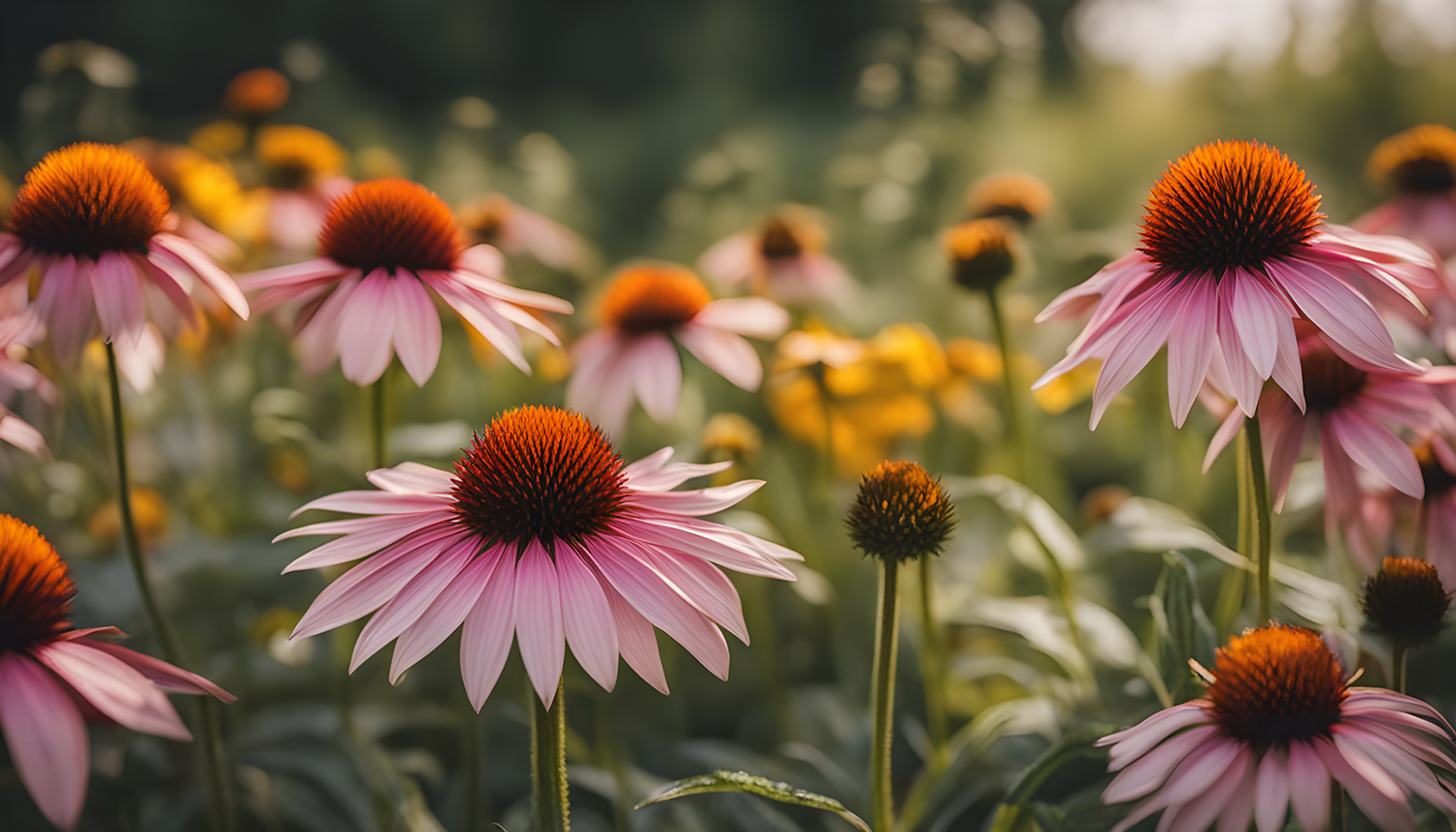

Pollinator friendly planting scheme
Pollinator friendly plants offer a dual benefit – not only do they enhance the aesthetic appeal of gardens, parks, highways and other green spaces, they also play an essential role in the natural ecosystem.
The role of plants that are appealing to pollinators is vital for enhancing biodiversity and ensuring food security. By attracting and sustaining pollinators, these plants facilitate the reproduction of many flowering plants, securing the production of fruits and seeds that sustain many animal species, including humans.
The concern is that the destruction of wildlife habitats and an increase in paved surfaces and artificial lawns is accelerating a decline in pollinator populations. We can support pollinators, like bees, beetles, and butterflies, by creating havens in our green spaces, contributing to a nationwide effort to support biodiversity.
Creating a pollinator-friendly planting scheme is quite simple. Choose a variety of plants that flower at different times throughout the year, providing a continuous food source. Incorporating native plants is particularly important, as they have evolved alongside local pollinators and offer the most suitable nourishment. Avoid using pesticides to further promote a supportive environment for these invaluable insects.
By maintaining these flowering sanctuaries, we can ensure a vibrant and thriving ecosystem that sustains both the beauty of nature and the delicate balance of wildlife.
1 Cotoneaster franchetii 2 Viburnum lantana 3 Viburnum × bodnantense ‘Dawn’ 4 Rosa canina 5 Echinacea purpurea 6 Rudbeckia fulgida var. sullivantii ‘Goldsturm’ 7 Chaenomeles japonica 8 Persicaria bistorta ‘Superba’ 9 Hebe ‘Red Edge’ 10 Ceanothus thyrsiflorus var. repens 11 Sedum ‘Autumn Joy’ 12 Geranium x johnsonii ‘Johnson’s Blue’ 13 Helleborus foetidus 14 Ajuga reptans

①
Cotoneaster franchetii
An evergreen shrub with glossy, grey-green leaves on long, arching stems. Blooms white, pink-tinted flowers in summer and orange berries in autumn.

②
Viburnum lantana
An upright shrub with grey-green serrated leaves. Heads of small, white tubular flowers appear in late spring and are followed by red berries which ripen to black. Its foliage provides lovely autumn colour as it transitions to a warm red. A native species which is good for informal hedges.
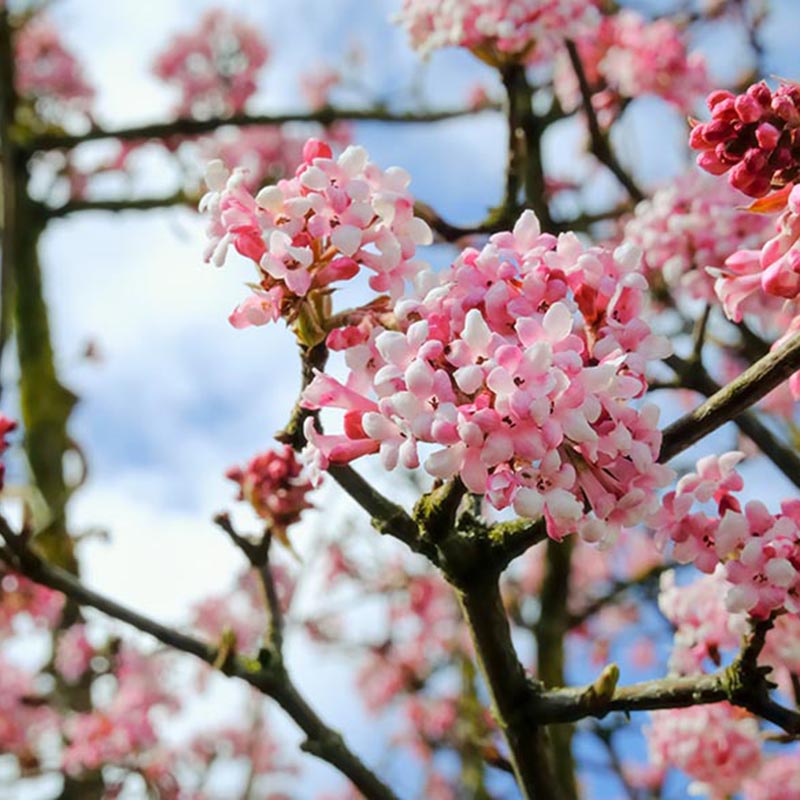
③
Viburnum × bodnantense ‘Dawn’
A tall, deciduous shrub with dark green, ovate leaves and clusters of fragrant pink flowers that appear on bare branches from November. Provides excellent winter flowers which are highly appreciated by bees and other pollinators. Plant Viburnum x bodnantense ‘Dawn’ near entrances or walkways to appreciate the scent in winter.

④
Rosa canina
A native species of rose with pale pink or white scented flowers in early summer, followed by red rose hips. It is vigorous with arching stems that will quickly form a thorny hedge to deter intruders. Tolerant of coastal areas and great for pollinators.
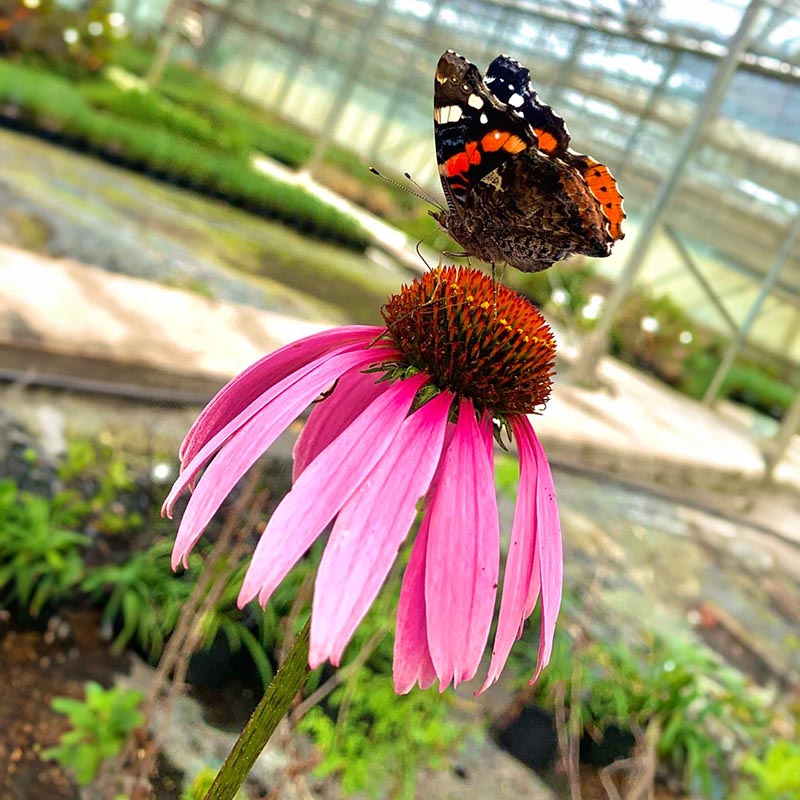
⑤
Echinacea purpurea
An upright herbaceous perennial that has ovate, hairy foliage and large, pink daisy-like flowers with orange-brown centres. Great for a cottage-style garden.
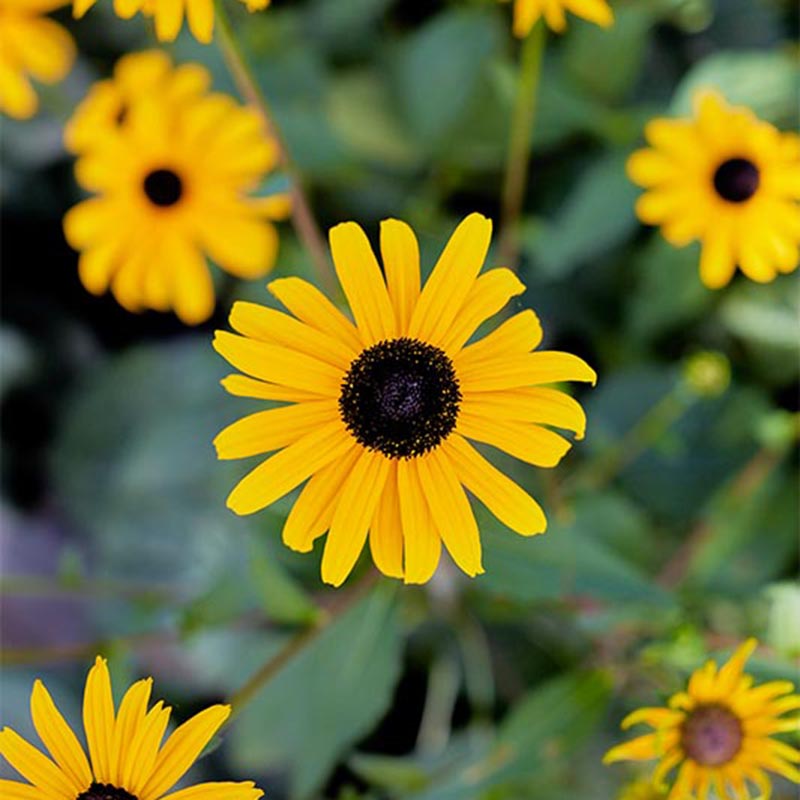
⑥
Rudbeckia fulgida var. sullivantii ‘Goldsturm’
A perennial with large, daisy-like, yellow flowers with black-brown centres from summer to autumn. Rudbeckia fulgida var. sullivantii ‘Goldsturm’ is particularly striking when planted in drifts and works well combined with ornamental grasses.

⑦
Chaenomeles japonica
A vigorous, fragrant shrub with oval, dark green leaves on spiny branches and orange-red spring flowers which are nectar and pollen rich. Small, green-yellow, edible fruits follow in autumn.

⑧
Persicaria bistorta ‘Superba’
A clump-forming, vigorous, semi-evergreen perennial with dense spikes of soft pink flowers from summer to early autumn, and veined, ovate, pointed, rich green leaves. Ideal for the front or middle of a flower border. Also works well planted as groundcover as it spreads rapidly.
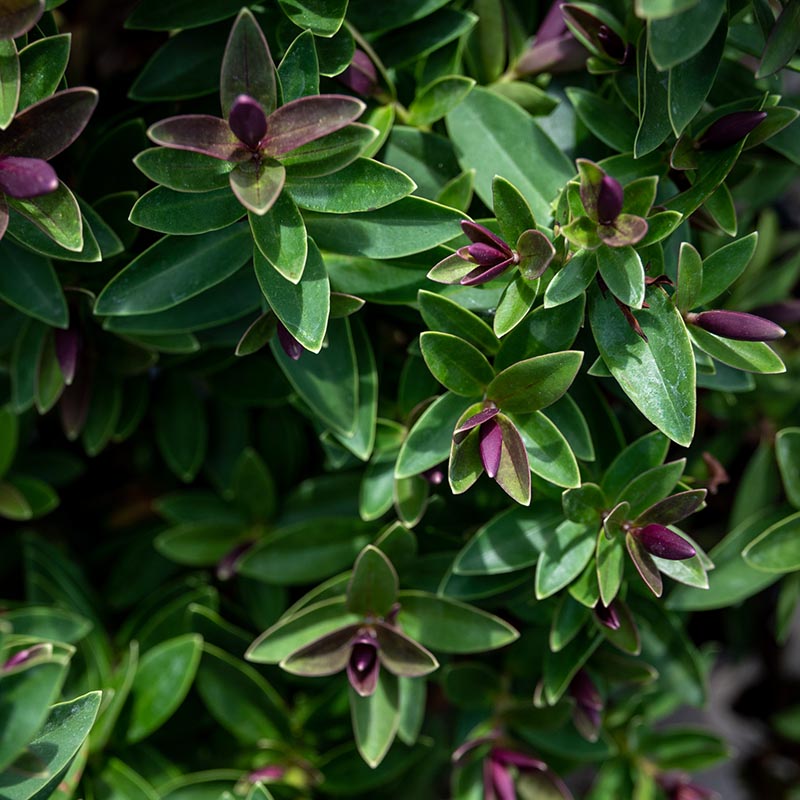
⑨
Hebe ‘Red Edge’
A slow-growing, compact, evergreen shrub that has grey-green leaves with red margins, which become particularly prominent during winter. In summer it blooms short spikes of lilac flowers which fade to white. Makes a great low, informal hedge.

⑩
Ceanothus thyrsiflorus var. repens
A low-growing, mound-forming shrub with fluffy, light blue flowers in spring and early summer. Great for positioning in the front of sunny borders or against a sheltered wall, where it will grow much taller. One of the hardiest Ceanothus and its nectar-rich flowers are loved by pollinators, including bees and butterflies.

⑪
Sedum ‘Autumn Joy’
A perennial with succulent green leaves and green buds that open into pink flower heads in summer. The flowers turn bronze-red in autumn. The dried flowers can remain through winter to retain interest in the garden. Provides a good late summer nectar source for pollinators.
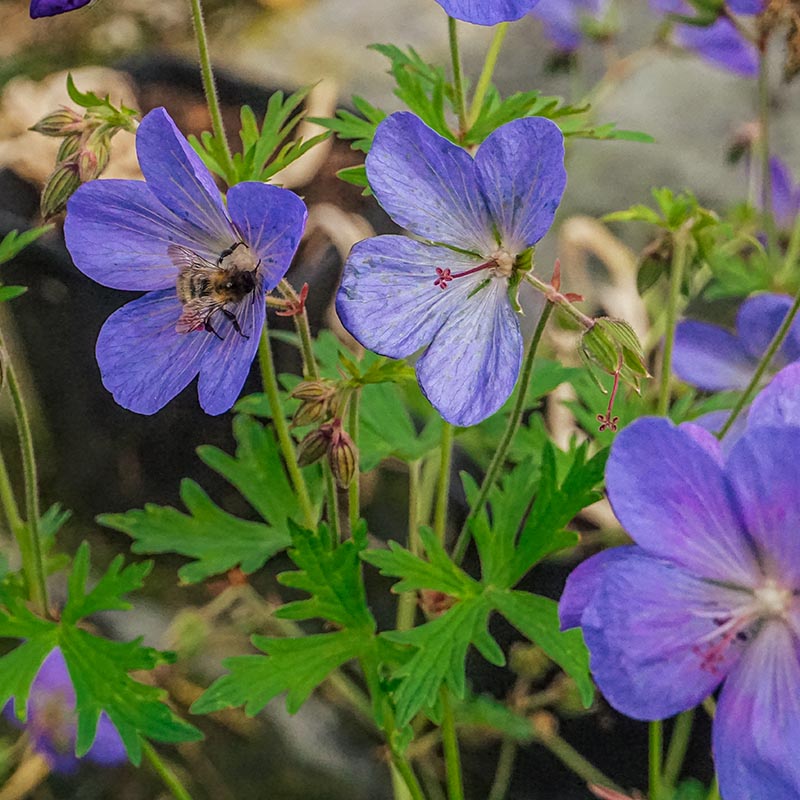
⑫
Geranium x johnsonii ‘Johnson’s Blue’
A clump-forming perennial with masses of dark-veined, lavender-blue flowers that become grey in colour as they mature, above deeply lobed, mid-green leaves. Looks great when allowed to spread in the front of borders, as it forms a dense carpet of foliage. Loved by butterflies.
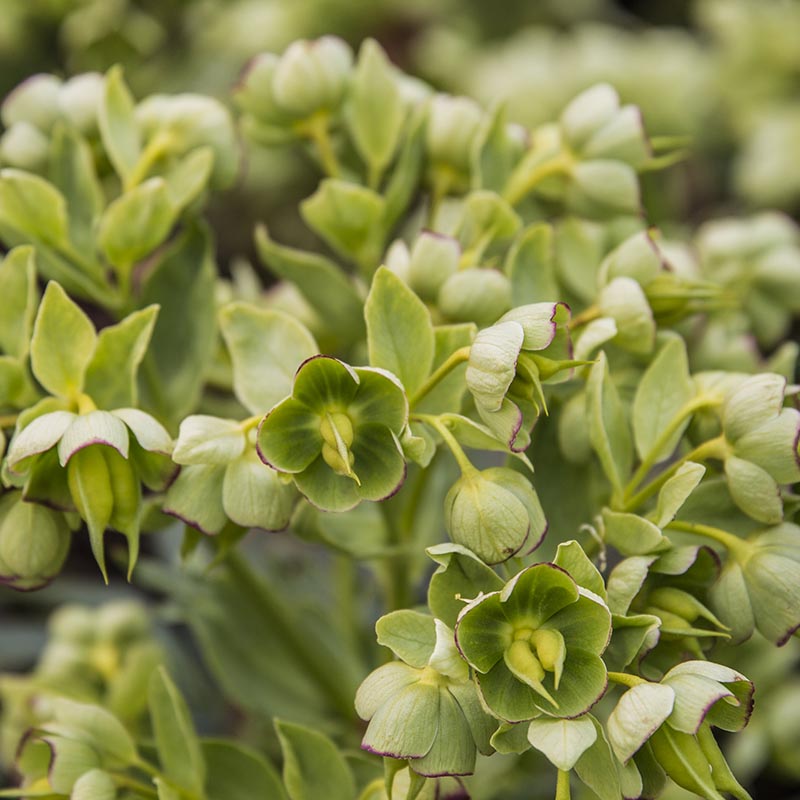
⑬
Helleborus foetidus
A native compact perennial that has bell-shaped, lime-green flowers and dark green, deeply divided foliage. Provides great architectural structure.
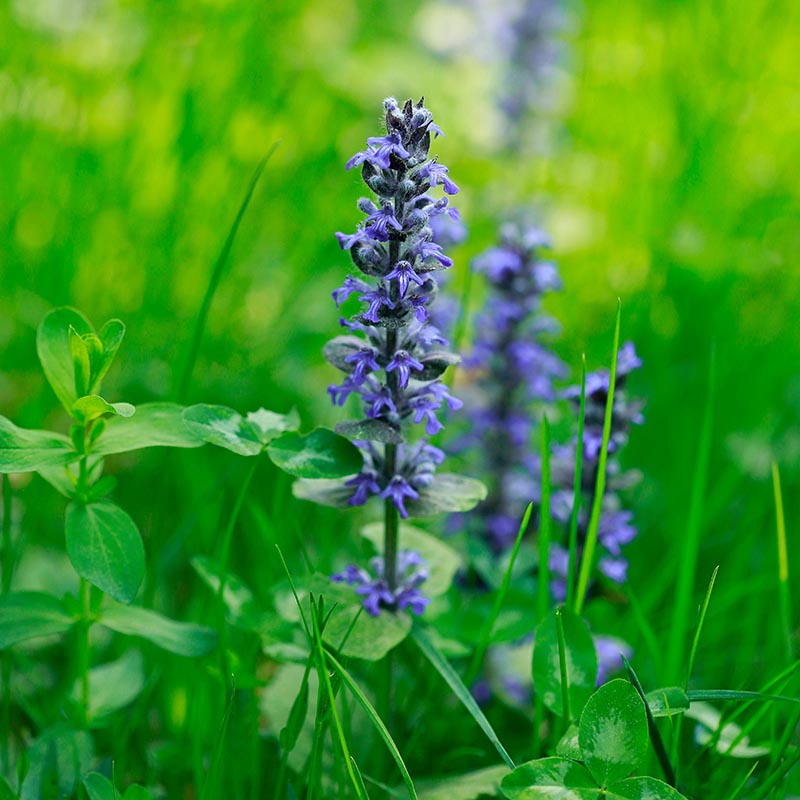
⑭
Ajuga reptans
A native low-growing, herbaceous perennial that forms a mat of dark green carpet and bears erect spikes of deep blue flowers. Excellent for groundcover in shaded spots.

